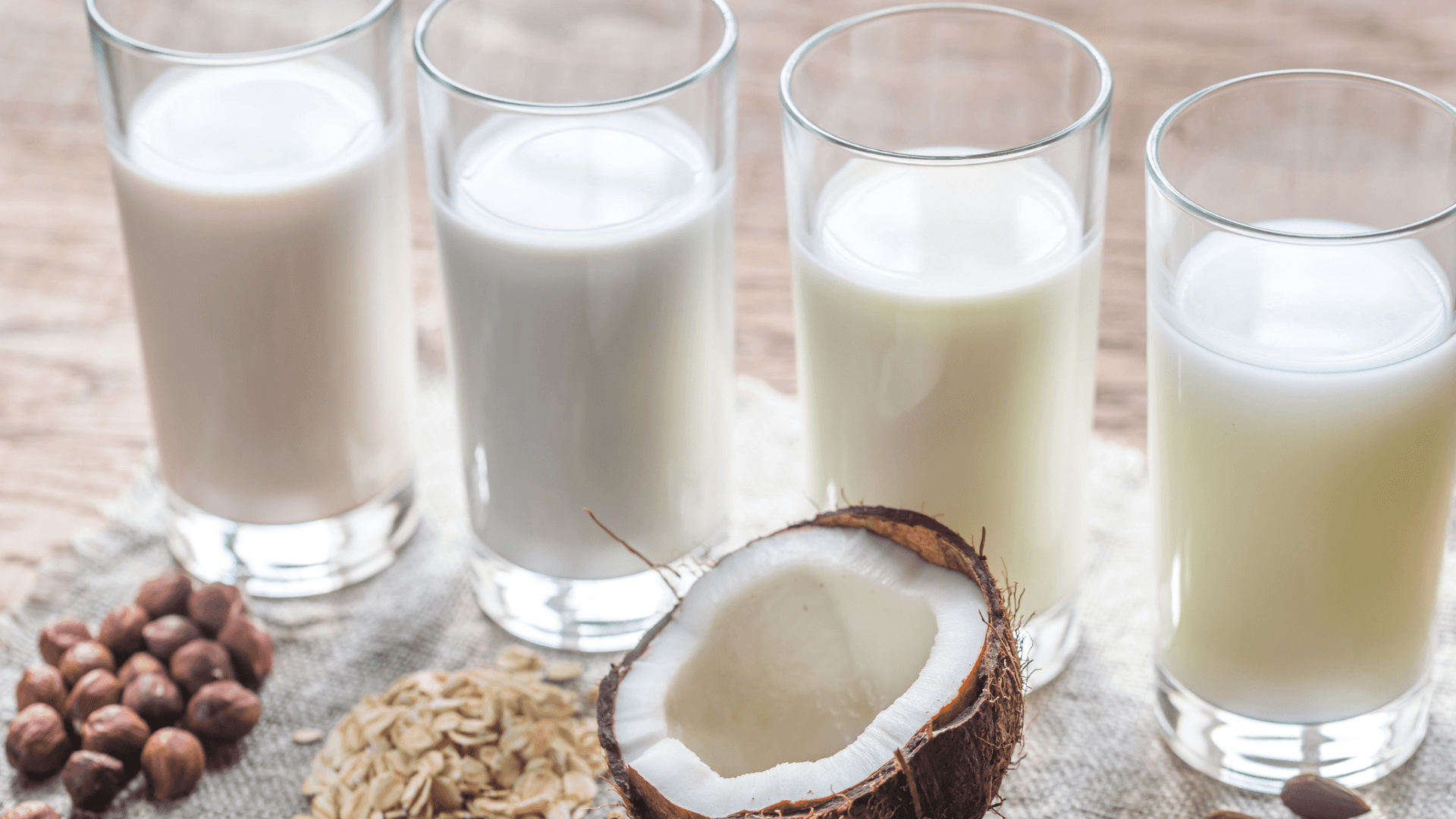Flavors and Traditions of Global Christmas
Flavors and Traditions of Global Christmas
Flavors and Traditions of Global Christmas
Nov 27, 2024
Nov 27, 2024
Nov 27, 2024

Analyze how people celebrate Christmas globally, revealing the rich cultural diversity in traditional dishes, historical accounts, and festive traditions that make this holiday special in every corner of the world.
Analyze how people celebrate Christmas globally, revealing the rich cultural diversity in traditional dishes, historical accounts, and festive traditions that make this holiday special in every corner of the world.
Analyze how people celebrate Christmas globally, revealing the rich cultural diversity in traditional dishes, historical accounts, and festive traditions that make this holiday special in every corner of the world.
Christmas, commemorated worldwide, reflects a rich cultural diversity in its dishes, origins, and traditions. From traditional recipes to historical roots, we explore how different cultures embrace this special day.
Christmas Dishes Around the World
Christmas tables bring together flavors that represent each region's identity:
Julesild - Denmark: A staple dish, Julesild consists of pickled herring seasoned with cinnamon and cloves, served with rye bread and remoulade, alongside gravlax and cured meats.
Barszcz - Poland: This beet soup with uszka (mushroom-filled ravioli) is the highlight of the traditional Polish 12-course Christmas Eve dinner.
Farofa - Brazil: In Brazil, farofa, made with cassava flour and enriched with ingredients like bacon and raisins, accompanies dishes like roasted pork, turkey, and salads.
Pan de Jamón - Venezuela: A bread filled with ham, raisins, and olives, Pan de Jamón is a must-have on Venezuelan Christmas tables, along with hallacas and papaya sweets.
Bibingka - Philippines: A traditional rice cake cooked in banana leaves, Bibingka, with cheese and salted eggs, is served after the Midnight Mass.
These recipes highlight the diverse ways Christmas is celebrated, bringing families together through unique flavors.
The Roots of Christmas Traditions
The Origin of the Christmas Tree
Originating in 16th-century Germany, the Christmas tree was adorned with fruits, nuts, and candles, symbolizing hope and renewal. Popularized in the 19th century by Queen Victoria and Prince Albert, this tradition adapted to each culture: in India, mango trees and bamboo are decorated; in Brazil, artificial trees are illuminated.
Evolution of Christmas Feasts
In the Middle Ages, sumptuous feasts marked Christmas, such as King Richard II's banquet, featuring meats, breads, and sweets. For the less privileged, it was a rare occasion of abundance. Dishes like mince pies evolved from combinations of meat and fruits to sweet pies. In Brazil, local elements like farofa and tropical fruits enriched the feasts.
Advent and the 12 Nights of Christmas
Advent, the preparation period, brought practices like countdown calendars and decorations with evergreens. The 12 nights, from December 24th to January 6th, were celebrated with music, parades, and festivities. In countries like Spain, Three Kings Day, with gifts and the Rosca de Reyes, is as important as Christmas.
Religious History and Secularization of Christmas
Choosing December 25th
Christmas, initially secondary in Christianity, gained prominence by being associated with the birth of Jesus and celebrated on December 25th. This date strategically coincided with pagan festivals like Dies Solis Invicti Nati, symbolizing the light of Christ.
The Liturgy and the Midnight Mass
Incorporated into the Christian calendar in the 9th century, Christmas became a liturgical milestone, featuring midnight masses, candles, and hymns like "Silent Night." In Brazil, the Midnight Mass remains a highlight of the celebrations.
Santa Claus and Father Christmas
Inspired by Saint Nicholas, Santa Claus became famous in North America as a generous and festive figure. Father Christmas, from medieval England, represented the Christmas spirit. These figures merged to create Santa Claus, a universal symbol.
Secular Christmas in the 19th Century
The Industrial Revolution brought a more family-oriented and commercial Christmas, popularizing cards, trees, and gifts. Writers like Charles Dickens reinforced values of charity and unity, transforming Christmas into an inclusive celebration.
—
Christmas transcends borders with its blend of faith, culture, and modernity. Whether exploring new dishes or adopting customs from other cultures, this holiday inspires unity and renewal. How about enriching your Christmas with a new tradition? After all, the magic of the celebration lies in the diversity it represents.
—
References
HILLERBRAND, H. J. Christmas. Available at: https://www.britannica.com/topic/Christmas. Accessed on: Nov. 25, 2024.
OWEN, C. The History of Christmas Traditions. Available at: https://news.liverpool.ac.uk/2023/12/21/the-history-of-christmas-traditions/. Accessed on: Nov. 25, 2024.
VINCENT, J. 15 Christmas Dishes from Around the World. Available at: https://www.nationalgeographic.com/travel/article/christmas-dishes-from-around-the-world. Accessed on: Nov. 25, 2024.
Christmas, commemorated worldwide, reflects a rich cultural diversity in its dishes, origins, and traditions. From traditional recipes to historical roots, we explore how different cultures embrace this special day.
Christmas Dishes Around the World
Christmas tables bring together flavors that represent each region's identity:
Julesild - Denmark: A staple dish, Julesild consists of pickled herring seasoned with cinnamon and cloves, served with rye bread and remoulade, alongside gravlax and cured meats.
Barszcz - Poland: This beet soup with uszka (mushroom-filled ravioli) is the highlight of the traditional Polish 12-course Christmas Eve dinner.
Farofa - Brazil: In Brazil, farofa, made with cassava flour and enriched with ingredients like bacon and raisins, accompanies dishes like roasted pork, turkey, and salads.
Pan de Jamón - Venezuela: A bread filled with ham, raisins, and olives, Pan de Jamón is a must-have on Venezuelan Christmas tables, along with hallacas and papaya sweets.
Bibingka - Philippines: A traditional rice cake cooked in banana leaves, Bibingka, with cheese and salted eggs, is served after the Midnight Mass.
These recipes highlight the diverse ways Christmas is celebrated, bringing families together through unique flavors.
The Roots of Christmas Traditions
The Origin of the Christmas Tree
Originating in 16th-century Germany, the Christmas tree was adorned with fruits, nuts, and candles, symbolizing hope and renewal. Popularized in the 19th century by Queen Victoria and Prince Albert, this tradition adapted to each culture: in India, mango trees and bamboo are decorated; in Brazil, artificial trees are illuminated.
Evolution of Christmas Feasts
In the Middle Ages, sumptuous feasts marked Christmas, such as King Richard II's banquet, featuring meats, breads, and sweets. For the less privileged, it was a rare occasion of abundance. Dishes like mince pies evolved from combinations of meat and fruits to sweet pies. In Brazil, local elements like farofa and tropical fruits enriched the feasts.
Advent and the 12 Nights of Christmas
Advent, the preparation period, brought practices like countdown calendars and decorations with evergreens. The 12 nights, from December 24th to January 6th, were celebrated with music, parades, and festivities. In countries like Spain, Three Kings Day, with gifts and the Rosca de Reyes, is as important as Christmas.
Religious History and Secularization of Christmas
Choosing December 25th
Christmas, initially secondary in Christianity, gained prominence by being associated with the birth of Jesus and celebrated on December 25th. This date strategically coincided with pagan festivals like Dies Solis Invicti Nati, symbolizing the light of Christ.
The Liturgy and the Midnight Mass
Incorporated into the Christian calendar in the 9th century, Christmas became a liturgical milestone, featuring midnight masses, candles, and hymns like "Silent Night." In Brazil, the Midnight Mass remains a highlight of the celebrations.
Santa Claus and Father Christmas
Inspired by Saint Nicholas, Santa Claus became famous in North America as a generous and festive figure. Father Christmas, from medieval England, represented the Christmas spirit. These figures merged to create Santa Claus, a universal symbol.
Secular Christmas in the 19th Century
The Industrial Revolution brought a more family-oriented and commercial Christmas, popularizing cards, trees, and gifts. Writers like Charles Dickens reinforced values of charity and unity, transforming Christmas into an inclusive celebration.
—
Christmas transcends borders with its blend of faith, culture, and modernity. Whether exploring new dishes or adopting customs from other cultures, this holiday inspires unity and renewal. How about enriching your Christmas with a new tradition? After all, the magic of the celebration lies in the diversity it represents.
—
References
HILLERBRAND, H. J. Christmas. Available at: https://www.britannica.com/topic/Christmas. Accessed on: Nov. 25, 2024.
OWEN, C. The History of Christmas Traditions. Available at: https://news.liverpool.ac.uk/2023/12/21/the-history-of-christmas-traditions/. Accessed on: Nov. 25, 2024.
VINCENT, J. 15 Christmas Dishes from Around the World. Available at: https://www.nationalgeographic.com/travel/article/christmas-dishes-from-around-the-world. Accessed on: Nov. 25, 2024.
Christmas, commemorated worldwide, reflects a rich cultural diversity in its dishes, origins, and traditions. From traditional recipes to historical roots, we explore how different cultures embrace this special day.
Christmas Dishes Around the World
Christmas tables bring together flavors that represent each region's identity:
Julesild - Denmark: A staple dish, Julesild consists of pickled herring seasoned with cinnamon and cloves, served with rye bread and remoulade, alongside gravlax and cured meats.
Barszcz - Poland: This beet soup with uszka (mushroom-filled ravioli) is the highlight of the traditional Polish 12-course Christmas Eve dinner.
Farofa - Brazil: In Brazil, farofa, made with cassava flour and enriched with ingredients like bacon and raisins, accompanies dishes like roasted pork, turkey, and salads.
Pan de Jamón - Venezuela: A bread filled with ham, raisins, and olives, Pan de Jamón is a must-have on Venezuelan Christmas tables, along with hallacas and papaya sweets.
Bibingka - Philippines: A traditional rice cake cooked in banana leaves, Bibingka, with cheese and salted eggs, is served after the Midnight Mass.
These recipes highlight the diverse ways Christmas is celebrated, bringing families together through unique flavors.
The Roots of Christmas Traditions
The Origin of the Christmas Tree
Originating in 16th-century Germany, the Christmas tree was adorned with fruits, nuts, and candles, symbolizing hope and renewal. Popularized in the 19th century by Queen Victoria and Prince Albert, this tradition adapted to each culture: in India, mango trees and bamboo are decorated; in Brazil, artificial trees are illuminated.
Evolution of Christmas Feasts
In the Middle Ages, sumptuous feasts marked Christmas, such as King Richard II's banquet, featuring meats, breads, and sweets. For the less privileged, it was a rare occasion of abundance. Dishes like mince pies evolved from combinations of meat and fruits to sweet pies. In Brazil, local elements like farofa and tropical fruits enriched the feasts.
Advent and the 12 Nights of Christmas
Advent, the preparation period, brought practices like countdown calendars and decorations with evergreens. The 12 nights, from December 24th to January 6th, were celebrated with music, parades, and festivities. In countries like Spain, Three Kings Day, with gifts and the Rosca de Reyes, is as important as Christmas.
Religious History and Secularization of Christmas
Choosing December 25th
Christmas, initially secondary in Christianity, gained prominence by being associated with the birth of Jesus and celebrated on December 25th. This date strategically coincided with pagan festivals like Dies Solis Invicti Nati, symbolizing the light of Christ.
The Liturgy and the Midnight Mass
Incorporated into the Christian calendar in the 9th century, Christmas became a liturgical milestone, featuring midnight masses, candles, and hymns like "Silent Night." In Brazil, the Midnight Mass remains a highlight of the celebrations.
Santa Claus and Father Christmas
Inspired by Saint Nicholas, Santa Claus became famous in North America as a generous and festive figure. Father Christmas, from medieval England, represented the Christmas spirit. These figures merged to create Santa Claus, a universal symbol.
Secular Christmas in the 19th Century
The Industrial Revolution brought a more family-oriented and commercial Christmas, popularizing cards, trees, and gifts. Writers like Charles Dickens reinforced values of charity and unity, transforming Christmas into an inclusive celebration.
—
Christmas transcends borders with its blend of faith, culture, and modernity. Whether exploring new dishes or adopting customs from other cultures, this holiday inspires unity and renewal. How about enriching your Christmas with a new tradition? After all, the magic of the celebration lies in the diversity it represents.
—
References
HILLERBRAND, H. J. Christmas. Available at: https://www.britannica.com/topic/Christmas. Accessed on: Nov. 25, 2024.
OWEN, C. The History of Christmas Traditions. Available at: https://news.liverpool.ac.uk/2023/12/21/the-history-of-christmas-traditions/. Accessed on: Nov. 25, 2024.
VINCENT, J. 15 Christmas Dishes from Around the World. Available at: https://www.nationalgeographic.com/travel/article/christmas-dishes-from-around-the-world. Accessed on: Nov. 25, 2024.
Compartilhar em:
Compartilhar em:

Preservação de monumentos naturais: protegendo tesouros globais para o futuro
Apr 1, 2025

Civilizações perdidas: mistérios do passado
Jan 31, 2025

Histórias ocultas dos monumentos mais famosos do mundo
Jan 15, 2024

Os efeitos das viagens espaciais no corpo humano
Dec 2, 2024

O impacto das redes sociais nas tradições de Ano Novo
Nov 28, 2024

Ano Novo: costumes, reflexões e caminhos para uma celebração sustentável
Nov 28, 2024

Astronomia e Natal: desvendando a Estrela de Belém e fenômenos celestes
Nov 27, 2024

Sabores e tradições do Natal global
Nov 27, 2024

Mindful Eating: transforme sua relação com a comida através da alimentação consciente
Apr 15, 2024

Abacate: uma fruta repleta de benefícios para sua saúde
Apr 11, 2024

Explorando os diferentes tipos de leite
Apr 8, 2024

Chá verde: uma fonte natural de saúde e vitalidade
Apr 5, 2024

Superalimentos: descubra o poder nutricional e os benefícios para a saúde
Apr 3, 2024

Alimentos anticancerígenos: descubra como reduzir o risco de câncer através da dieta
Mar 29, 2024

Os efeitos do açúcar no corpo
Mar 27, 2024
Ver Também
Ver Também
Ver Também
Ver Também

Preservação de monumentos naturais: protegendo tesouros globais para o futuro
Apr 1, 2025

Civilizações perdidas: mistérios do passado
Jan 31, 2025

Histórias ocultas dos monumentos mais famosos do mundo
Jan 15, 2024

Os efeitos das viagens espaciais no corpo humano
Dec 2, 2024

O impacto das redes sociais nas tradições de Ano Novo
Nov 28, 2024

Ano Novo: costumes, reflexões e caminhos para uma celebração sustentável
Nov 28, 2024

Astronomia e Natal: desvendando a Estrela de Belém e fenômenos celestes
Nov 27, 2024

Sabores e tradições do Natal global
Nov 27, 2024

Mindful Eating: transforme sua relação com a comida através da alimentação consciente
Apr 15, 2024

Abacate: uma fruta repleta de benefícios para sua saúde
Apr 11, 2024

Explorando os diferentes tipos de leite
Apr 8, 2024

Chá verde: uma fonte natural de saúde e vitalidade
Apr 5, 2024

Superalimentos: descubra o poder nutricional e os benefícios para a saúde
Apr 3, 2024

Alimentos anticancerígenos: descubra como reduzir o risco de câncer através da dieta
Mar 29, 2024

Os efeitos do açúcar no corpo
Mar 27, 2024

